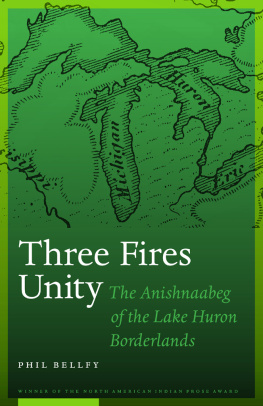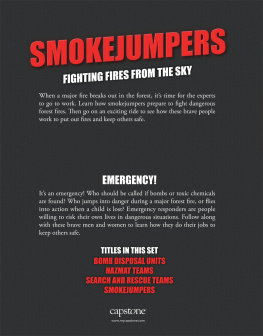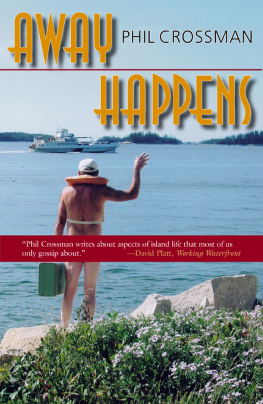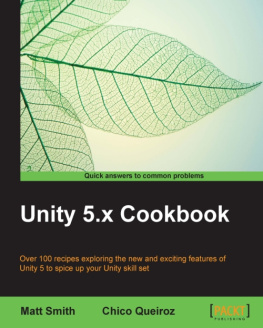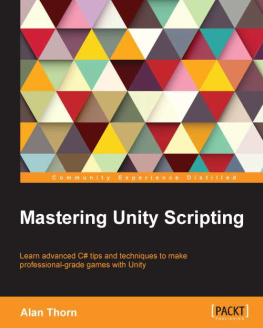Phil Bellfy - Three Fires Unity
Here you can read online Phil Bellfy - Three Fires Unity full text of the book (entire story) in english for free. Download pdf and epub, get meaning, cover and reviews about this ebook. year: 2019, publisher: UNP - Nebraska, genre: Religion. Description of the work, (preface) as well as reviews are available. Best literature library LitArk.com created for fans of good reading and offers a wide selection of genres:
Romance novel
Science fiction
Adventure
Detective
Science
History
Home and family
Prose
Art
Politics
Computer
Non-fiction
Religion
Business
Children
Humor
Choose a favorite category and find really read worthwhile books. Enjoy immersion in the world of imagination, feel the emotions of the characters or learn something new for yourself, make an fascinating discovery.
- Book:Three Fires Unity
- Author:
- Publisher:UNP - Nebraska
- Genre:
- Year:2019
- Rating:3 / 5
- Favourites:Add to favourites
- Your mark:
- 60
- 1
- 2
- 3
- 4
- 5
Three Fires Unity: summary, description and annotation
We offer to read an annotation, description, summary or preface (depends on what the author of the book "Three Fires Unity" wrote himself). If you haven't found the necessary information about the book — write in the comments, we will try to find it.
Three Fires Unity — read online for free the complete book (whole text) full work
Below is the text of the book, divided by pages. System saving the place of the last page read, allows you to conveniently read the book "Three Fires Unity" online for free, without having to search again every time where you left off. Put a bookmark, and you can go to the page where you finished reading at any time.
Font size:
Interval:
Bookmark:




2011 by Phil Bellfy
Portions of this manuscript originally appeared in
Lines Drawn upon the Water: First Nations and the
Great Lakes Borders and Borderlands , edited by Karl S.
Hele (Waterloo, Ontario: Wilfred Laurier University
Press, 2008), 2142.
All rights reserved

Library of Congress Cataloging-in-Publication Data
Bellfy, Phil.
Three Fires unity: the Anishnaabeg of the Lake
Huron borderlands / Phil Bellfy.
p. cm.
Winner of the 2010 North American Indian Prose Award.
Portions of this manuscript originally appeared
in Lines drawn upon the water: First Nations and
the Great Lakes borders and borderlands, edited by
Karl S. Hele (Waterloo, Ontario: Wilfred Laurier
University Press, 2008)T.p. verso.
Includes bibliographical references and index.
ISBN 978-0-8032-1348-7 (cloth: alk. paper)
ISBN 978-1-4962-1661-8 (paper: alk. paper)
ISBN 978-1-4962-1751-6 (epub)
1. Ojibwa IndiansHuron, Lake, Region (Mich. and
Ont.)History. 2. Ottawa IndiansHuron, Lake,
Region (Mich. and Ont.)History. 3. Potawatomi
IndiansHuron, Lake, Region (Mich. and Ont.)
History. 4. Ojibwa IndiansHuron, Lake, Region
(Mich. and Ont.)Social conditions. 5. Ottawa
IndiansHuron, Lake, Region (Mich. and Ont.)
Social conditions. 6. Potawatomi IndiansHuron,
Lake, Region (Mich. and Ont.)Social conditions.
7. Huron, Lake, Region (Mich. and Ont.)History.
8. Huron, Lake, Region (Mich. and Ont.)Ethnic
relations. I. Title.
E 99. C 6 B 426 2011
977.004'97333 DC 22
2010046306
Set in Dante MT.
The publisher does not have any control over and does not assume any responsibility for author or third-party websites or their content.
To the memory of Apiish Kaakoke, White Raven,
my Seventh Father
Illustrations
Maps
Tables
Figure
Preface
From the swirling waters of the rapids at Sault Ste. Marie to the St. Clair River delta that gives rise to Walpole Island, the Lake Huron borderlands are a treasure trove of history and culture. Native people have lived in this area since the glacial waters subsided and the Great Lakes took on their present configuration about twenty-five hundred years ago. The rich fisheries and abundant wildlife induced them to stay in the region after having migrated west from their ancient homeland on the Great Salt Sea in the land of the rising sun far to the east the land of Gitchee Gumee of Longfellows Hiawatha fame.
The people of this area, collectively known as the Anishnaabeg, are made up of the Ojibway (or Chippewa), Ottawa (or Odawa), and Potawatomi tribes. They have thrived for millennia in the rich land of the Lake Huron borderlands, but when the Europeans (more specifically the French and British) arrived in the early seventeenth century looking for land and resources, the Native peoples were forced to adapt to an era of war and conflict as they tried to defend their homeland against the invaders. A way of life, little changed for generations, was now altered forever in a radically short span of time. Regional disputes became more intense, often fueled by European conflicts and their cruel methods of war. Conflict over the fur trade and access to trapping territories exacerbated ancient rivalries, and warriors often found themselves hundreds of miles from home fighting enemies they barely knew, for reasons they may never have fully understood.
Yet throughout these European proxy wars, the Native people of the area fought valiantly to preserve control and occupancy of their homelands. It is odd, then, that even today the more dominant society of North America calls the actions of the Native warrior Pontiac and his tribal allies Pontiacs Rebellion; Native people themselves are more inclined to view him as one of the leaders who fought vigorously to defend his homeland against European invasion.
After the Europeans settled their differences with the various tribes under the Treaty of Ghent in 1814, the Native people of the area, once seen as a military threat, were now relegated to the role of abandoned allies and left to fend for themselves as they dealt with the new American government or the Canadian authorities, divided by a new line drawn through the heart of their homeland.
The new threats the Native peoples faced were no longer military ones as the days of Tecumseh and Pontiac had long been over. Instead the new threats were legal and diplomatic ones; guns and arrows gave way to pen and paper. But throughout this treaty-making period, one thing remained steadfast: the quiet determination of the Lake Huron borderlands Native people to continue to live in their home territory, enjoying the fruits of the land where the Creator had put them and where the bones of their ancestors were buried.
The overwhelming importance of such a goal meant that when the time came to negotiate treaties with the Europeans, Native people felt compelled to send their most capable negotiators, regardless of who lived on the American or Canadian side of the border. The result of this treaty-making process with the British and the Americans is an astonishing number of crossborder treaty-signers, individuals who signed treaties on behalf of all the borderlands Native people. This book tells the story of how the people of the upper Great Lakes, and the individuals who ably represented them at various treaty councils, made the best deals possible for their nation under very difficult circumstances. It begins with an exploration of the Lake Huron borderlands area, explaining its geological development and how the Native peoples came to settle there; describes the various Native groups who came to live in the area prior to European contact; and briefly traces the events of the contact years, detailing the numerous conflicts, wars, and eventual treaties that occurred.
This voyage of discovery ends with a look at the contemporary state of indigenous life in the Lake Huron borderlands and how the Native peoples have endured as a nation a nation originally forged in the salt air of an ancient sea, tempered in the cool waters of the upper Great Lakes, and matured in the political fires of North American nation-building.
Acknowledgments
As do many academic books, this one started out as my dissertation, but the research and my involvement with the project have stretched out over twenty years. Throughout that time this project has taken a few turns and has been, of course, aided by many. First, my committee deserves special mention: George Cornell, Jim McClintock, and Victor Howard. Helen Tanner and Richard White also gave me sage advice. Margaret Cunniffe helped greatly through her editing skills over these many years. Margaret Pearce created the maps for this volume. I especially need to say miigwetch (thank you) to the People of the Three Fires, especially the Ogemaag of the area under study: Dave White, Dean Jacobs, Dean Sayers, Lyle Sayers, Aaron Payment, Joe McCoy, Jeff Parker, and Bucko Teeple. Of course, as this book has been a work in progress for the past two decades, numerous others have helped make it what it is today. I send all of them a heartfelt chi-miigwetch as well.
Font size:
Interval:
Bookmark:
Similar books «Three Fires Unity»
Look at similar books to Three Fires Unity. We have selected literature similar in name and meaning in the hope of providing readers with more options to find new, interesting, not yet read works.
Discussion, reviews of the book Three Fires Unity and just readers' own opinions. Leave your comments, write what you think about the work, its meaning or the main characters. Specify what exactly you liked and what you didn't like, and why you think so.

